




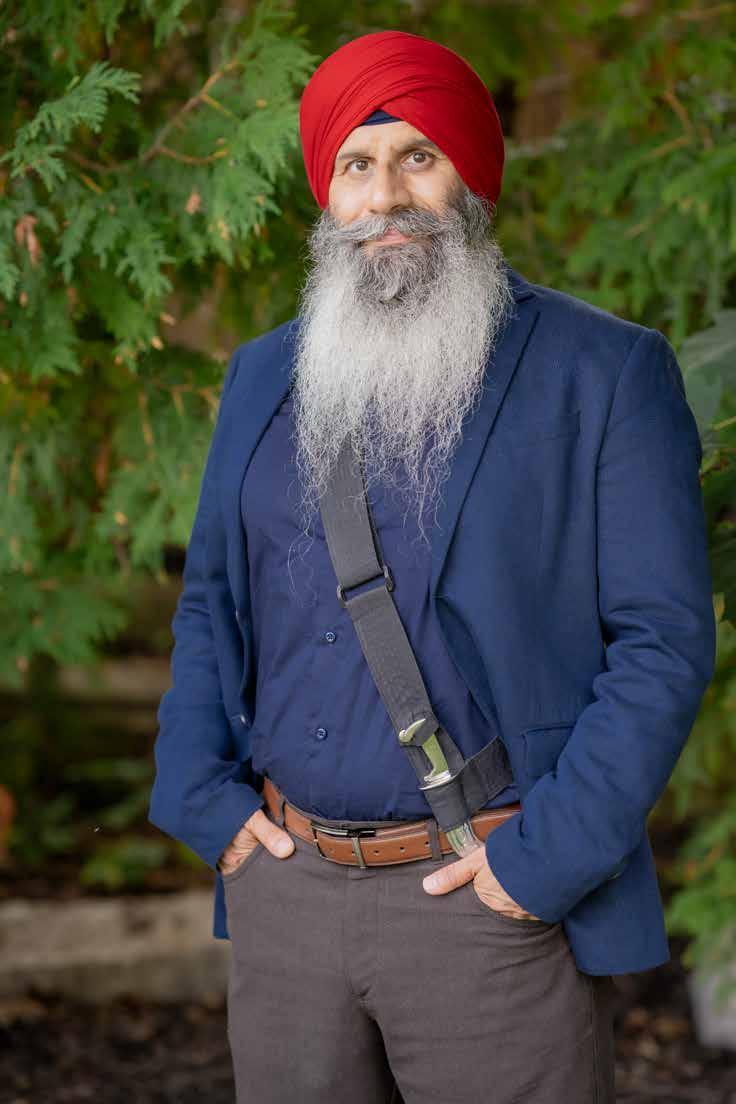

























As a realtor, my job goes beyond helping clients find a house— it's about finding a home that nurtures health, well-being, and peace of mind. A healthy home isn't just about aesthetics or luxury; it's about the way a space interacts with the people living in it, supporting both physical and mental health. From air quality to energy efficiency, a holistic approach can transform any house into a haven of wellness. One of the key elements of a healthy home is air quality. Poor ventilation, the presence of toxins from building materials, and inadequate filtration systems can affect everything from sleep quality to respiratory health. As a realtor, I always emphasize homes equipped with advanced

HVAC systems or those designed to allow natural airflow. Features like air purifiers, mold-resistant materials, and green-certified paints can significantly improve the atmosphere inside the home. Energy efficiency is another
can live in comfort, free from drastic temperature swings or high energy bills.
Lastly, a healthy home is one that promotes mental and emotional well-being. Spaces that allow for natural light, easy access to




Welcome to the latest edition of Ontario South Asian Health Magazine, a celebration of wellness, expertise, and the vibrant community that keeps pushing the boundaries of health and vitality. We are thrilled to bring you a diverse range of topics, each carefully curated to inspire and inform.
In this edition, we proudly feature Jas Combow, your friendly local pharmacist, whose unique approach to health care blends deep-rooted tradition with modern solutions. Jas’s dedication to serving our community is unparalleled, and his insights are sure to resonate with readers looking for personalized care and compassionate service. Next, Rounit Narula takes us on a journey to optimal fitness in “Get Jacked,” where he shares his expertise on transforming both body and mind. For those looking to elevate their fitness and mental resilience, this article is packed with actionable advice.
We also dive into One Elephant Integrative Health Team, a collective that’s revolutionizing healthcare with a holistic approach. Their blend of expertise and compassion sets them apart, making health and healing more accessible to all.
For readers seeking harmony in both their homes and lives, Kalpesh Joshi presents “Vastu Shastra for Wellness.” This ancient practice offers profound insights into achieving prosperity and balance through thoughtful spatial design.
Finally, we bring you event coverage from CHFA NOW Toronto 2024, where health and wellness innovators from across Canada gathered to showcase cutting-edge products and services. It’s an exciting look at the future of health in our region! We hope this edition empowers you on your journey to better health, and we thank you for being a part of our ever-growing community.
During this auspicious and prosperous time of the year, we wish you and your loved ones a very Happy Diwali and Bandhi Chhor Divas! May all of you be free from darkness and abundant with light. Cheers to Good Health!
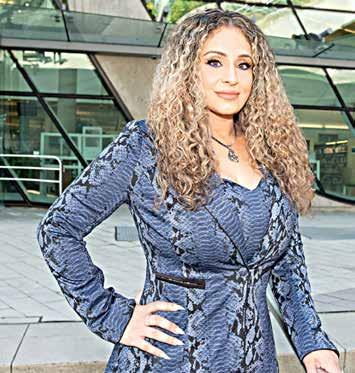



In today’s fast-paced world, it’s common to hear people dismiss the idea of Vastu Shastra with statements like, “I don’t believe in Vastu,” or “I don’t follow it.” Some may even say they don’t know what Vastu is. Many in our modern society want to distinguish themselves from traditional practices, fearing that they’ll be seen as outdated or superstitious. However, this attitude can distance them from the deeply rooted principles of Indian culture that have contributed to well-being for centuries. Vastu Shastra, the ancient Indian architectural system, is designed to create harmony and enhance the health, happiness, and prosperity of those who live and work within a space. So, why be defensive or dismissive about something that has the potential to positively transform our lives? We have only one life, and Vastu can bring balance and wellness to the family members living under the same roof.
Vastu Shastra is not just about architecture; it is about creating an environment that aligns with the natural elements to promote well-being. Known as “Vastu Shilpa Shastra”, it is one of the 64 traditional Indian arts. Its goal is to balance the five elements—earth, water, fire, air, and space—within a living or working space to enhance the physical, emotional, and spiritual wellness of its occupants.
Our bodies, like everything in the universe, are composed of these five elements. When they are in harmony, we feel at peace and in sync with our surroundings. However, when the balance is disturbed, we may feel discomfort, stress, or even face health problems. The principle behind Vastu is simple: bring more natural energy into your environment to foster wellness and prosperity. It’s our responsibility as individuals and family members to create a home that nourishes our health and happiness.
While many of our homes are already constructed, and making structural changes may seem difficult or impractical, consulting a Vastu expert can offer simple and effective solutions. A knowledgeable consultant can guide you through small adjustments—like rearranging furniture or adjusting the flow of energy—that make a significant difference in the overall harmony of your home.
Even if your home isn’t originally designed according to Vastu principles, small changes can help align it with the forces of nature. Rearranging furniture, positioning rooms for optimal energy flow, and even adjusting how your family members sit or sleep can have a positive impact. For example, one common concern is how children study at home. They may study in various places like the dining room, living room, bedroom, or basement. You may wonder how Vastu can help improve their concentration or performance in school.
The answer lies in “direction”— a key aspect of Vastu. When children study facing the right direction, the flow of energy enhances their focus and grasping power. According to Vastu, the East is the most
suitable direction for studying, as it aligns with the rising sun and fresh energy. So, if your child is studying at the dining table, simply ensure they are facing East, which is easy to arrange since dining tables typically have chairs in multiple directions. This simple adjustment can improve their academic performance and ability to concentrate.
Wellness isn’t just a buzzword; it’s the state of being where your mind, body, and soul are in alignment. This sense of balance keeps you positive, focused, and active—qualities that are essential both personally and professionally. Achieving wellness starts with your surroundings. The spaces where you live and work have a profound effect on your mental health, and Vastu offers the tools to optimize those environments for well-being.
Your daily routine, shaped by your home or workspace, plays a crucial role in how you feel both mentally and physically. By making small Vastu-inspired changes in your home or office, you can enhance your mental clarity, reduce stress, and improve overall health. For example, simple adjustments like keeping your home clutter-free, placing your bed in the right direction, or introducing more natural light can elevate your well-being. These small steps help you create an environment that supports not just your own wellness but also the happiness and prosperity of everyone in your home.
Incorporating Vastu Shastra into your life doesn’t mean you have to overhaul your living space or adopt complex rituals. It’s about making thoughtful, purposeful decisions that invite harmony, positivity, and health into your life. In doing so, you not only benefit yourself but also cultivate love and positivity in your relationships with others.
So, why not give Vastu a chance? By embracing the ancient wisdom of Vastu Shastra, you’re not just enhancing your living space—you’re opening the door to a healthier, more fulfilling life.




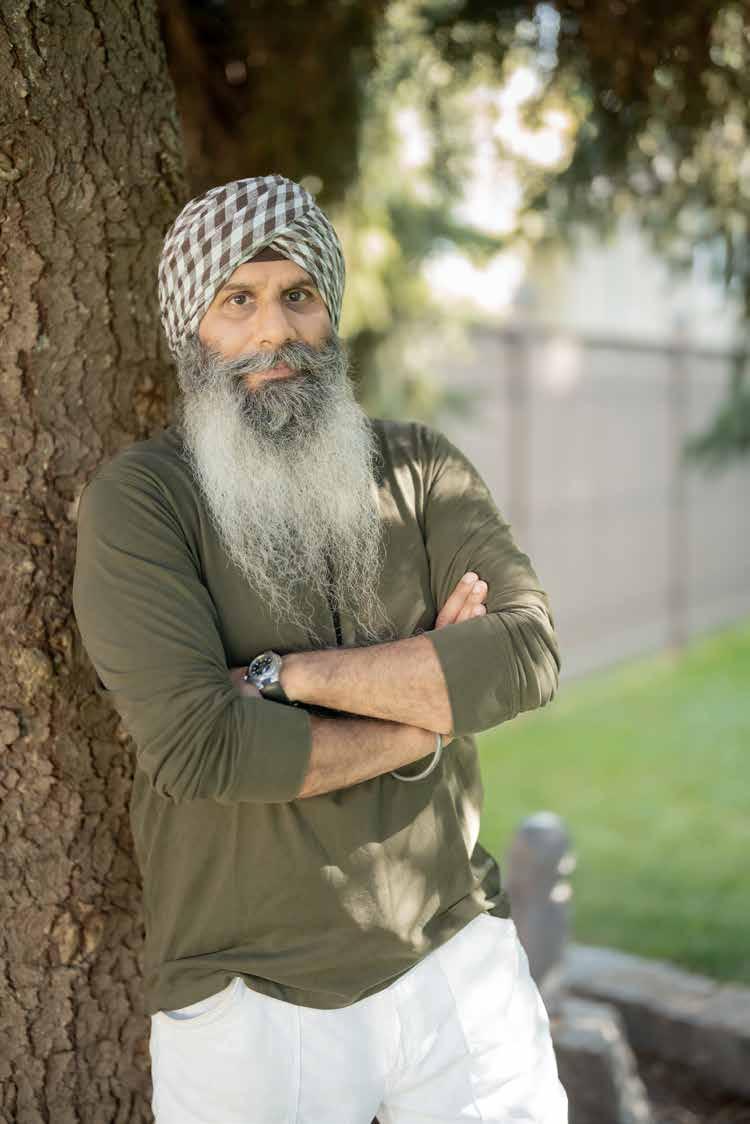
Jas Combow is a dedicated pharmacist and the owner of 2 pharmacies in Ontario - Harmony Valley Pharmacy in North Oshawa and East Liberty Village Pharmacy in Toronto. With a Pharmacy degree from Dalhousie University in Halifax, Nova Scotia, Jas brings a wealth of experience and a personal touch to his practice. Before opening Harmony Valley Pharmacy in 2015, Jas was a Franchise Pharmacy Owner for a large pharmacy chain from 2004 to 2014.
I wanted to work in healthcare, but unfortunately, I missed the medicine application deadline. But I guess everything happens for a reason because during that time, I realized that I wasn't entirely comfortable with direct physical interactions, like the doctor-patient dynamic in dentistry.
What inspired you to become a pharmacist, and what do you find most rewarding about it?
While I was in University, I knew I wanted to work in healthcare, but unfortunately, I missed the medicine application deadline. But I guess everything happens for a reason because during that time, I realized that I wasn't entirely comfortable with direct physical interactions, like the doctor-patient dynamic in dentistry. Pharmacy felt like the right fit for me as it was a way to contribute to health while being able to maintain a professional distance. Since becoming a Pharmacist in 1999, I have found it immensely rewarding over the years, both personally and professionally. I feel that I have made a significant impact in the communities where my pharmacies are located and I’ve learned a lot about the people around me as well as myself.
He left the corporate structure and became an Independent Pharmacy Owner and never looked back. Being an Independent Pharmacist has allowed Jas to serve his customers with greater flexibility in service, product offering, and copayment pricing. Customers appreciate the one-on-one personalized service and compassionate care that is reminiscent of the mom-and-pop pharmacies of the past. His services include seasonal flu shots, medication reviews, and free delivery, all aimed at ensuring the best possible health outcomes for his community 1 2
Pharmacists are often the most accessible healthcare providers. What are some lesser-known ways patients can utilize pharmacy services beyond filling prescriptions?
Currently, we are dealing with a burden on our Canadian healthcare system. There is a major shortage of doctors, therefore pharmacists have been able to expand their scope when dealing with patients. We are now able to refill prescriptions for chronic conditions, like blood pressure and diabetes, using our professional judgment for up to six months. Additionally, we manage minor ailments—so if a patient has been diagnosed with a condition like a urinary tract infection or heartburn, we can easily prescribe treatments based on templates we follow. This ensures that we only treat minor issues and we always refer to a doctor if necessary.
We see patients regularly—monthly or quarterly—while doctors may see them less frequently. So, we tend to have a closer relationship with them and it’s important for us to build a foundation of trust.
3 4 5
How has your Sikh background and values influenced your approach to healthcare and the way you serve your community?
My motto is “Ham Nahi Changey Bura Nahi Koi — I am not good, no one is bad.” This reminds me to treat everyone with respect and always provide honest care without bias or judgment. It’s about helping people to the best of my ability, regardless of their background.
We are regulated by the Ontario College of Pharmacists, which requires maintaining a learning portfolio. We can choose our learning topics and attend continuing education seminars and programs from drug manufacturers to stay informed on the latest developments. I take pride in staying on top of industry trends and research updates. Anything I can do to further educate and enlighten myself as well as my staff, will directly benefit my patients.
do you encourage vaccination, especially in communities with vaccine hesitancy?
COVID-19 increased awareness around vaccinations, and the media has played a significant role in educating the public. For those hesitant, herd immunity helps protect them, and we aim to provide clear, factual information to alleviate their concerns.
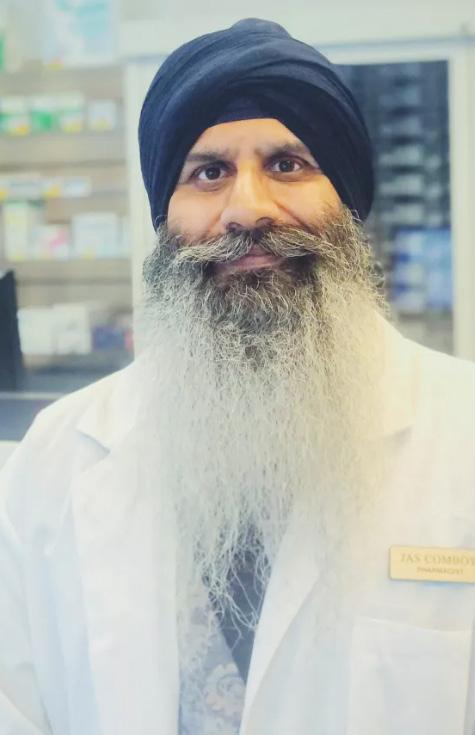
I take pride in staying on top of industry trends and research updates. Anything I can do to further educate and enlighten myself as well as my staff, will directly benefit my patients.
common over-the-counter health issues do you encounter, and what guidance do you provide?
We often receive questions about conditions like GERD, constipation, and insomnia. I don’t just hand out medications; I also provide non-pharmacological advice. For example, I might suggest lifestyle changes, such as avoiding late-night coffee or limiting screen time, as these are crucial for effective treatment.
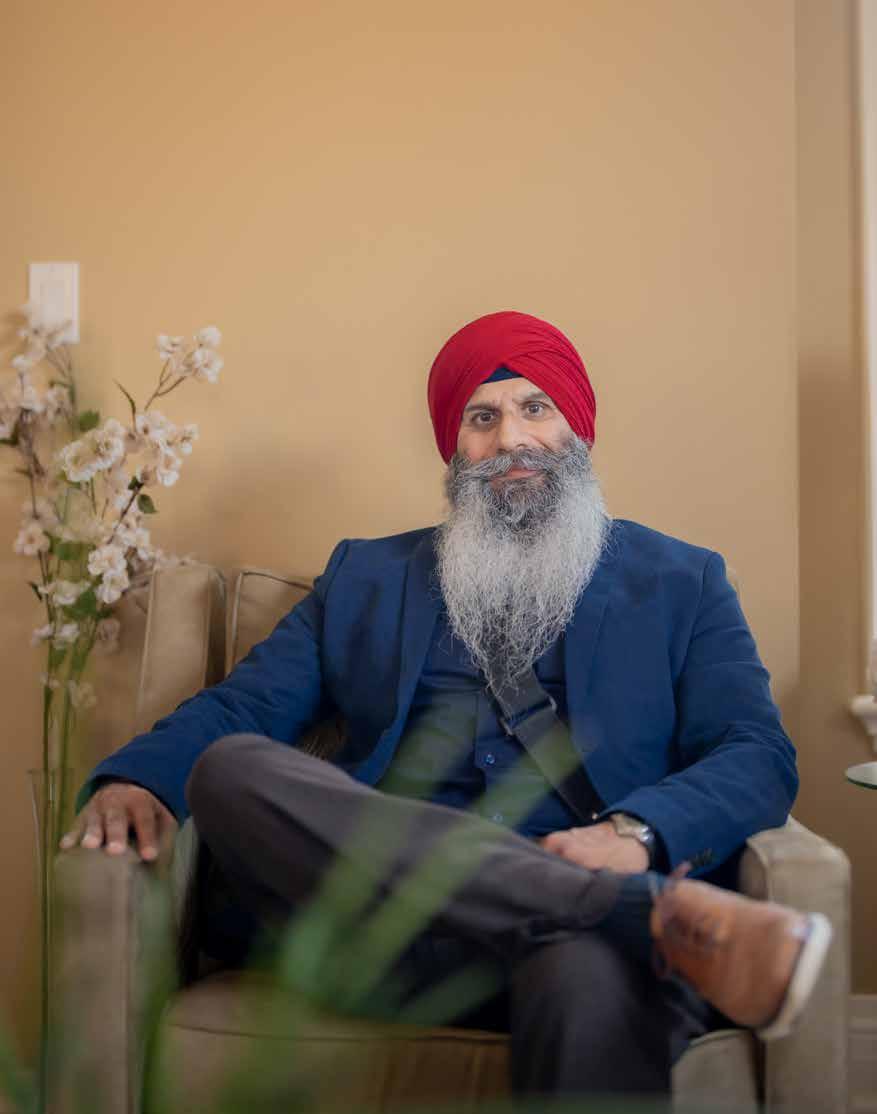
I don’t just hand out medications; I also provide non-pharmacological advice. For example, I might suggest lifestyle changes, such as avoiding late-night coffee or limiting screen time, as these are crucial for effective treatment
7 8 9
We see patients regularly—monthly or quarterly—while doctors may see them less frequently. So, we tend to have a closer relationship with them and it’s important for us to build a foundation of trust.
How do you help patients manage chronic conditions like diabetes or high blood pressure through pharmacy care?
We see patients regularly—monthly or quarterly—while doctors may see them less frequently. So, we tend to have a closer relationship with them and it’s important for us to build a foundation of trust. We educate our patients on monitoring blood sugar and blood pressure, review lab results, and encourage lifestyle changes like diet and exercise to complement their medication.

What’s your take on supplements, and how should people approach them?
Many people think supplements are harmless because they’re natural, but they can interact with medications and food. It’s essential to discuss any supplements with a pharmacist to avoid potential harm.
How do pharmacists support patients dealing with mental health issues like anxiety or depression?
Mental health issues are increasingly prevalent, especially among younger people. As accessible healthcare providers, we receive many questions about anxiety and depression medications on a regular basis. It’s important for us to explain to the patients that these medications work on neurotransmitters and take time to show effects. If one medication isn’t effective, we remind patients that there are many different options available.
What are your long-term goals for your pharmacies? Are you planning to expand your locations or deepen your expertise in healthcare?
My original vision wasn’t to have multiple pharmacies; it was more about being an integral part of each community where my pharmacies are located. We want to be the go-to hub in the neighbourhood, a trusted pharmacy with strong ties to the community while we build long-term connections with our patients.
For example, at Harmony Valley Pharmacy in Oshawa, we make it a point to sponsor local sports teams and engage in various charitable events on an annual basis. It feels good to know we are involved with the community on a grassroots level. I am happy to announce that we’re gearing up for our 10-year anniversary next May, which will include a community barbecue and festivities. This is an exciting milestone in my career and I am looking forward to celebrating with the community. As our conversation with Jas Combow wraps up, it's clear that his dedication to pharmacy and community health is profound. He emphasizes the importance of accessibility in healthcare and the unique role pharmacists play in patient education and support. Jas's commitment to treating each individual with respect and understanding reflects his Sikh values, creating an inclusive environment in his pharmacies. Looking ahead, Jas envisions deepening his community connections while advocating for expanded pharmacy services. His approach serves as a model for aspiring healthcare professionals, proving that passion and empathy can significantly impact community health.
705 Grandview St N #105A Oshawa, ON L1K 0V4
901 King St W #105A Toronto, ON M5V 3H5 Located in Liberty Village, Downtown Toronto


Kay Blair Hospice (KBH) is a volunteer driven, non- profit registered charity building the first hospice (12 b eds) and Centre of Excellence in Brampton
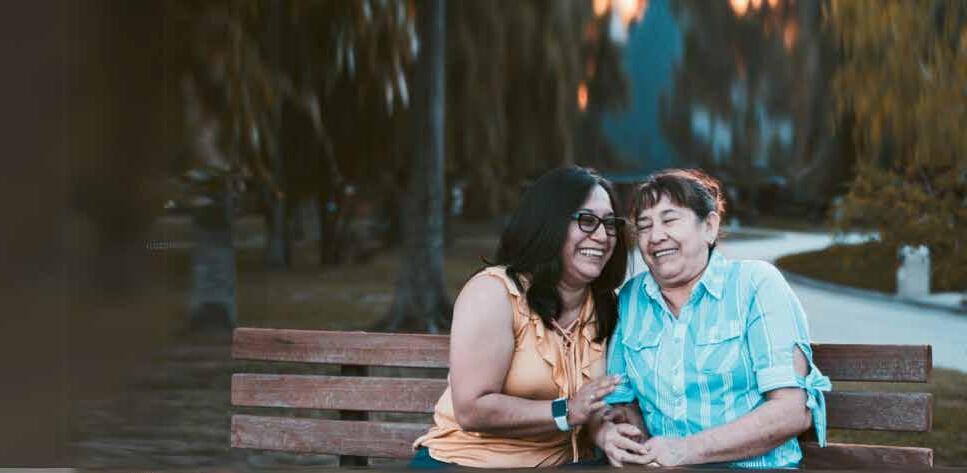
Mission : Provide end-of-life care in a safe, compassionate and inclusive environment
Vision : Caring for the dying while celebrating living
Values : Quality Service, Inclusivity, Dignity, Integrity and Accountability
Brampton is home to over 800,000 residents and expected to grow by 66% by 2051. The city is facing a critical need for improved end-of-life care. Provincial guidelines mandate the city should have 56 hospice beds. Currently Brampton has no hospice beds Addressing this gap is essential for meeting the community's healthcare needs.
What we will build
A state-of-the-art, twelve bed hospice residence for those at end-of-life
A Centre of Excellence for education, training and mentoring in all settings
Community programs to meet the needs of individuals living and coping with life-limiting illness and loss


Over the past three years, 20,000 Ontarians transferred to hospice care, saving 20,000 hospital bed days and $199M in healthcare costs. Hospice care offers higher quality at a third of the cost of hospital care, providing professional, compassionate support for patients and families.
Services include medical care, wellness programs, pain management, grief support, and culturally inclusive care, following international standards and World Health Organization guidelines.


Our deepest gratitude to Mayor Patrick Brown and the City of Brampton for the generous gift of land to build Kay Blair Hospice!
This 1.7 acres of land, located in the heart of our city at 11475 Bramalea Road, Sesquicentennial Park, will serve as the foundation for our hospice. This marks a significant milestone in our journey bringing us one step closer to our goal.


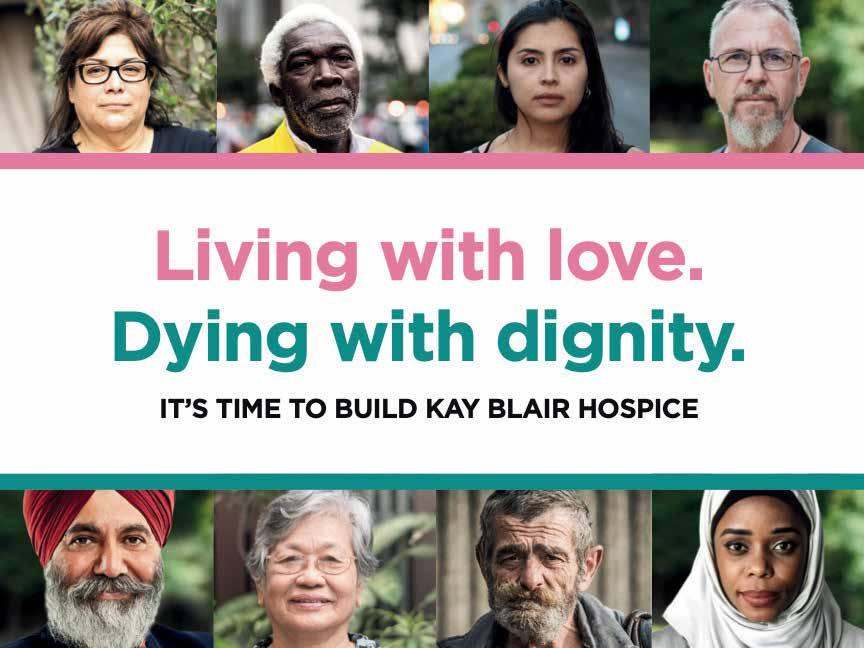






















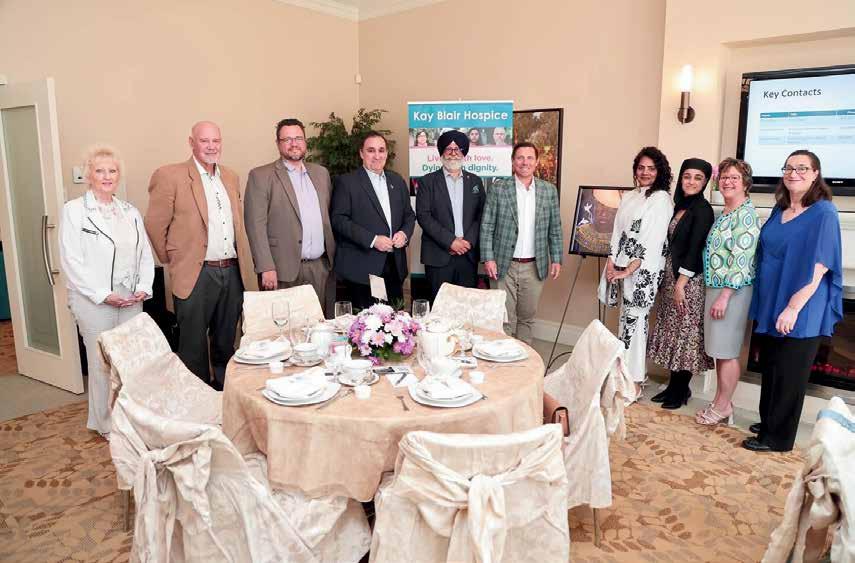

As publishers of the South Asian Health Magazine across Canada, we had the privilege of attending the CHFA Now Toronto 2024 event at the Enercare Centre in downtown Toronto. This tradeshow takes place every September and seems to be getting bigger and better every year! They showcase a wide variety of vendors who are dedicated to natural, organic, wellness products.

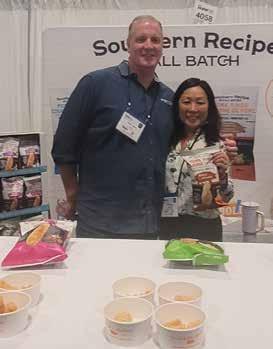







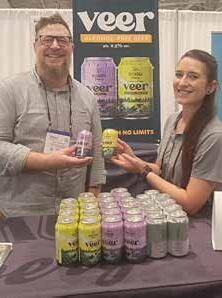









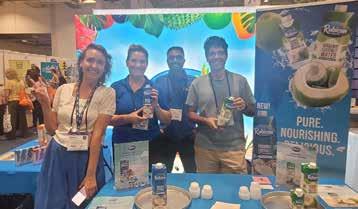











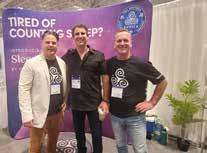


Dr. Nidhi Jalota, is a highly skilled and accomplished family physician with a passion for aesthetic medicine. With extensive training, Dr. Jalota has become an expert in a wide range of non-surgical treatments.
In addition to her medical expertise, Dr. Jalota, brings a unique artistic touch to each procedure, ensuring her patients receive a personalized, natural-looking results. As a family physician, she also understands the importance of a holistic approach to healthcare and strives to help her patients look and feel their best from inside out.
Enter through the doors of My Aesthetic Lab, and relax in luxury from start to finish knowing you’ll be in good hands with complete discretion. My Aesthetic Lab is designed to ensure you feel calm and relaxed while waiting for or in treatment. Feel safe and comfortable knowing you’re in safe hands with our experts.

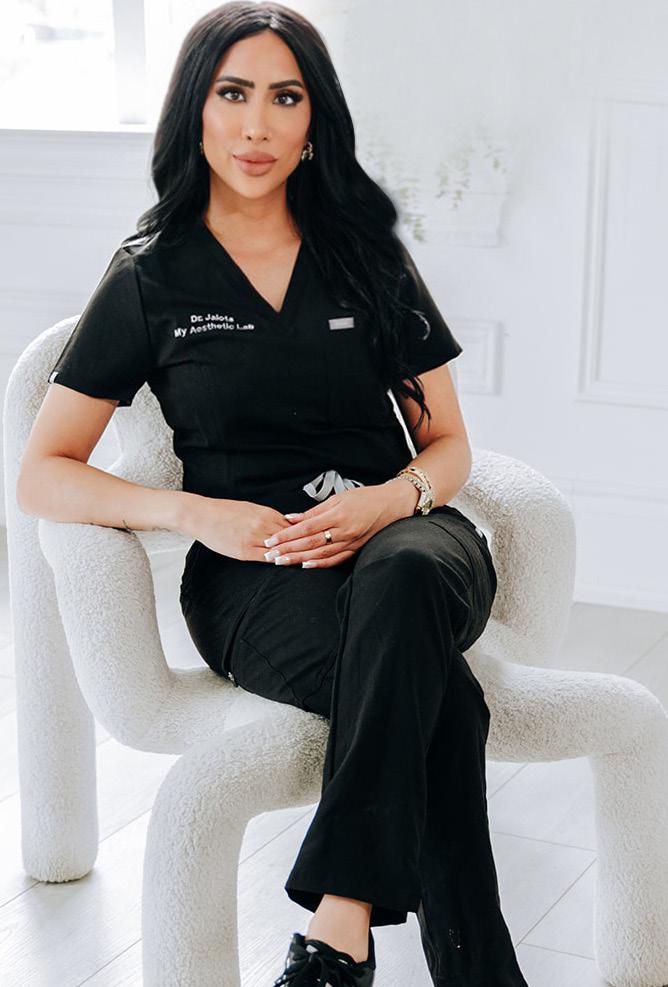
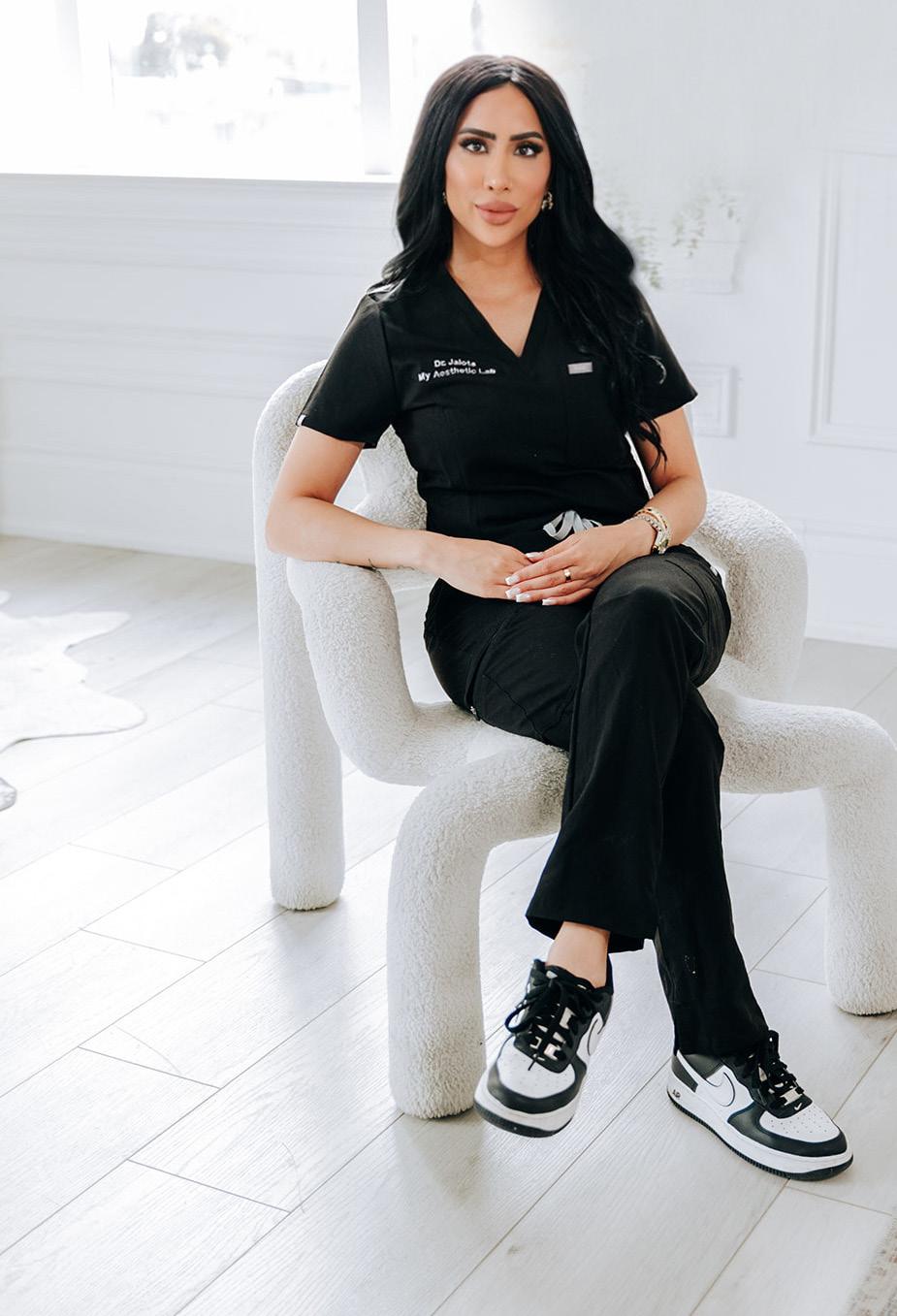
Safely and naturally lose 20-45 pounds in 6 weeks without drugs, intense exercise, and boring food

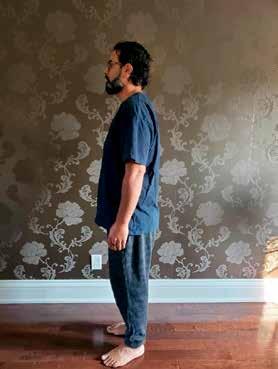


Less inflammation
Balanced blood sugar
More energy
Balanced
Balanced
At The Living Proof Institute, we believe in getting to the root cause, teaching you skills instead of giving you more pills and leveraging your body's own wisdom to heal you safely, rapidly, and holistically
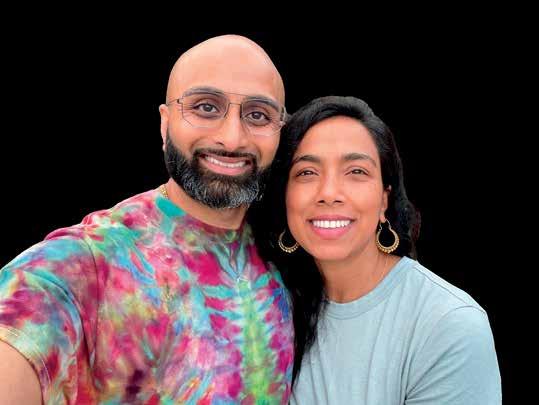
Our mission is to inform, educate, and inspire you whole We invite you to get a copy of our book an learn more about our unique approach to health
With love and gratitude
Sachin and Dipa Patel - Founders

We proudly serve clients all over the world and we have trained hundreds of holistic practitioners globally in our evidence-based root-cause process

Scan here with your smartphone camera to instantly get a FREE copy of Healing Habits and FREE weight loss masterclass training!



WITH EXPERTISE & COMPASSION



Tell us about your background and experience in the medical field, particularly in your area of specialization.
Let me take you on a journey that began in 2007 when I started my chiropractic education at the Canadian Memorial Chiropractic College. By 2011, I had graduated and was eager to dive deeper into this fascinating field. My passion for learning and commitment to excellence led me to the highly competitive Clinical Sciences residency program that same year. This program profoundly shaped my professional path, opening doors to the diverse roles I now hold: Chiropractor (for both humans and animals), Researcher, and Professor.
In 2013, I ventured into private practice, starting as an associate in a multi-disciplinary clinic in Ottawa.
Our clinic, led by women of color, has earned awards for our interdisciplinary team-based care for individuals, families, and corporations. One Elephant is a community leader for women’s health care.
This experience was a significant stepping stone, eventually leading to co-owning One Elephant Integrative Health Team Inc. in Oakville. Our clinic, led by women of color, has earned awards for our interdisciplinary team-based care for individuals, families, and corporations. One Elephant is a community leader for women’s health care. This journey has only deepened my dedication to exceptional patient care and
My clinical focus is on chronic pain, where I blend my understanding of the mind and body to help patients manage their pain effectively. Alongside my clinical work, I’ve developed strong research skills. Since 2013, I’ve been with The Ottawa Hospital Research Institute, currently serving as a Research Program Manager. This role highlights my leadership in research and innovation, recently culminating in the launch of The Power Over Pain Portal, which provides evidence-informed resources for those living with chronic pain.
Expanding my expertise, in 2018, I completed post-graduate training in animal chiropractic through the Veterinary Chiropractic Learning Centre. Treating animals in my practice has been incredibly rewarding. In 2022, I earned a Masters in Health Research Methodology from McMaster University, equipping me with advanced skills to push the boundaries of knowledge, improve clinical practice, strengthen health systems, and enhance population health.
Recognizing the transformative power of education, I embarked on a new phase of my career in 2020 as a part-time Professor at Seneca College. Here, I teach in the Behavioral Sciences and the Honours Bachelor of Therapeutic Recreation programs. Sharing my knowledge and experiences with students is incredibly fulfilling, as I contribute to shaping the future of health care.
This journey has been marked by continuous growth, a dedication to my patients, and a commitment to advancing the field of chiropractic through research and education. It’s a path I’m deeply passionate about and one that I look forward to continuing for years to come.
What inspired you to pursue a career in chiropractic care, and how has your journey shaped your approach to patient care?
My inspiration to pursue a career in chiropractic care began with a deeply personal experience. My mother sustained a back injury while working in a factory, and I witnessed firsthand the profound impact it had on her life and our family’s. She struggled with chronic pain and faced significant challenges navigating the healthcare system to find person centered treatment as well as understanding her employee rights. My mother, while she could speak and understand English, did not have a strong command of the language. Watching her journey sparked a passion in me to help others in similar situations, to alleviate pain, and to improve their quality of life.
I chose chiropractic care because it offers a hands-on, manual therapy approach that allows me to directly engage with patients and make immediate, tangible differences in their well-being. The field emphasizes not just treating symptoms but teaching people about their bodies—how they can move effectively, connect mind to body, manage their pain, and achieve their optimal best. I am passionate about empowering patients with knowledge and skills to maintain their health and well-being, which aligns perfectly with the principles of chiropractic care. I also have a soft spot for newcomers to Canada, who may not understand English very well and do not understand their rights.
TikTok@dr.yaad
I am passionate about empowering patients with knowledge and skills to maintain their health and well-being, which aligns perfectly with the principles of chiropractic care
This holistic, interactive approach to healthcare resonates deeply with my desire to help others live their healthiest lives.
My journey has profoundly shaped my approach to patient care, molding it into an inclusive and patientcentered practice. Growing up in Pickering, Ontario, I witnessed firsthand the importance of recognizing and valuing the unique backgrounds and experiences of each individual. This exposure instilled in me a deep appreciation for inclusivity, driving me to ensure that all patients feel seen, heard, and respected, regardless of their cultural, socio-economic, or personal backgrounds. My education and professional experiences further reinforced this commitment, teaching me that the best care emerges from a partnership with patients, where their voices and choices are integral to the decision-making process. In addition to inclusivity, my approach is firmly grounded in evidence-informed practices, stemming from a rigorous academic background and continuous professional development. I have always sought to stay on top of the latest research and advancements in healthcare, understanding that an evidence-based approach is crucial for delivering the highest quality of care. Coupled with a deep sense of empathy and understanding, cultivated through personal experiences and patient interactions, I strive to offer care that is not only scientifically sound but also compassionate and tailored to individual needs. This holistic approach ensures that my patients receive comprehensive, empathetic, and effective care, reflecting the blend of knowledge and human connection that defines my journey in healthcare.
My Doberman, Raider – inspired me to pursue a career in animal chiropractic. Raider had a roached back, from an underlying musculoskeletal issue. Medications were not indicated in his condition so that got me to thinking – what else is there out there for dogs with musculoskeletal issues. This is when I learned about animal chiropractic care. For Raider, manual therapy was the cure, with months of rehabilitation exercises, coupled with spinal adjustments and soft tissue therapy, we were able to improve his roached back.
Animal chiropractic offers a myriad of benefits across various species, ranging from play injuries in household pets to managing arthritis in aging animals and optimizing performance in sporting dogs and horses. Unlike humans, animals cannot verbally communicate their discomfort or pain, making it challenging to diagnose and treat musculoskeletal issues effectively. Animal chiropractors, however, utilize their expertise in biomechanics, manual therapy techniques and exercise rehabilitation to identify and address neuromusculoskeletal health, providing relief and restoring mobility to our furry patients.
TikTok@dr.yaad

Our hands-on approach often yields immediate results, with many animals exhibiting improved movement and comfort after just a few sessions.
Furthermore, animal chiropractic is particularly valuable in managing conditions such as arthritis, which commonly affect older pets and working animals – shout out to our service animals. Through gentle movement of the spinal joints, chiropractic adjustments can alleviate pain, reduce inflammation, and improve joint function, enhancing the quality of life for animals. Additionally, for sporting dogs and horses, maintaining optimal musculoskeletal health is crucial for peak performance and injury prevention. Regular chiropractic care can help optimize biomechanics, enhance flexibility, and reduce the risk of injuries, allowing these animals to perform at their best in competitive settings. Overall, animal chiropractic offers a noninvasive and holistic approach to improving the well-being and performance of our beloved animal companions across various life stages and activities.
As a young South Asian professional in the field of chiropractic care, I have encountered various challenges, one of which revolves around communicating about chiropractic care with medical healthcare providers. In some instances, there exists a gap in understanding and acceptance of chiropractic practices within the broader medical community, leading to communication barriers and misconceptions. Overcoming this challenge requires proactive efforts to bridge this gap through education, clinical
research, and collaboration. By fostering open dialogue and sharing evidence-based research demonstrating the efficacy of chiropractic / manual care, I strive to build mutual respect and understanding among healthcare professionals, ultimately benefiting patient care through interdisciplinary collaboration and holistic treatment approaches.
Furthermore, as a Doctor dedicated to promoting holistic well-being, I have faced the challenge of teaching patients the value of exercise and the mind-body connection in achieving optimal health outcomes. One notable example is a patient who presented with chronic low back pain. Through comprehensive assessment and dialogue, I discovered that their sedentary lifestyle and high-stress levels were contributing factors to their condition. By incorporating personalized exercise routines, stress management techniques, and educating the patient about the mind-body connection, we were able to significantly reduce their pain and improve their overall quality of life. This experience underscores the importance of not only treating symptoms but also empowering patients to take an active role in their health through lifestyle modifications and self-care practices.
At One Elephant Integrative Health, our inspiration to establish this unique healthcare practice was deeply rooted in the tale of the six blind men and the elephant. This story resonated with us profoundly, highlighting the importance of embracing diverse perspectives in understanding the complexities of health and wellness. 4
5
Tell us about what inspired you to start One Elephant Integrative Health? Is there anything unique about the variety of services offered?
Just as each blind man perceives the elephant differently based on the part they touch, traditional healthcare often focuses on isolated aspects of health without considering the whole person. We recognized the need for an integrative approach that encompasses the whole spectrum of human health. This realization led us to create a space where individuals could access a comprehensive range of services aimed at addressing their physical, mental, emotional and spirtual well-being. Like the blind men exploring the elephant, we believe that by integrating various modalities under one roof, we can provide a more holistic and nuanced approach to healthcare that acknowledges the interconnectedness of body, mind, and spirit.
What truly sets One Elephant apart is our commitment to offering a diverse array of services, including naturopathic medicine, dietitian services, chiropractic care, psychotherapy, massage therapy, physiotherapy, and social work. By bringing together practitioners from various disciplines, we offer our patients a comprehensive team based, and collaborative approach to healing and well-being. Our team works synergistically, drawing upon our collective expertise to develop personalized treatment plans tailored to each individual’s unique needs and goals. This integrative model not only addresses the root causes of health issues but also empowers our patients to take an active role in their own well-being. Just as the blind men in the story gain a fuller understanding of the elephant by sharing their perspectives, we believe that by embracing a diversity of approaches, we as a team can guide our patients towards whole person health and overall better quality of life.

In your opinion, what are some of the most pressing issues or challenges facing healthcare today, and how do you propose addressing them?
Several pressing issues confront healthcare today, demanding innovative solutions for improvement. One significant challenge is the prolonged wait times for primary care services, exacerbating health disparities and delaying essential treatments. For instance, individuals in rural areas or underserved communities often face extended wait times due to a shortage of primary care providers. To address this, telemedicine and virtual care platforms can offer accessible and timely consultations, reducing wait times and ensuring equitable access to healthcare services regardless of geographic location. Expanding the scope of practice for allied healthcare providers is also crucial in addressing the growing healthcare demands and improving access to specialized services. Nurse practitioners, physician assistants, and chiropractors, among others, possess valuable skills and expertise that can complement traditional healthcare delivery models. By granting these providers greater autonomy and recognition, we can leverage their capabilities to fill gaps in care, particularly in underserved areas or specialties with workforce shortages.
Collaborative practice models that facilitate interdisciplinary teamwork and shared decision-making can optimize patient outcomes while maximizing the efficiency and effectiveness of healthcare delivery.
Access to healthcare remains a critical issue, particularly for marginalized populations who encounter barriers such as financial constraints, language barriers, or lack of insurance coverage. Implementing an equity lens in healthcare delivery is essential to address these disparities and ensure that everyone has equitable access to quality care. To address this issue, policymakers must prioritize healthcare infrastructure development in underserved areas, incentivize healthcare professionals to work in rural and remote communities, and expand insurance coverage to include essential healthcare services. This can also include initiatives such as community health centers, mobile clinics, and culturally sensitive care models tailored to the specific needs of diverse populations. Additionally, leveraging mobile health (mHealth) technologies and community health workers can help bridge the gap by delivering healthcare services directly to marginalized populations, improving health outcomes and promoting social justice. By prioritizing equitable access and addressing social determinants of health, we can create a more inclusive healthcare system that serves all individuals regardless of socioeconomic status or background. Taking an equity lens in healthcare delivery is essential to address systemic disparities and promote health equity among diverse populations. This involves recognizing and addressing the root causes of health inequities, such as systemic racism, poverty, and discrimination. Implementing culturally competent care practices, investing in community-based healthcare initiatives, and actively involving marginalized communities in decision-making processes can help dismantle barriers to equitable healthcare access and outcomes. For instance, establishing partnerships with local community organizations and cultural leaders can facilitate the co-design of healthcare interventions that are tailored to the unique needs and preferences of underserved populations, fostering trust and engagement in healthcare services.
Furthermore, shifting towards a preventative care model is crucial for addressing the rising burden of chronic diseases and reducing healthcare costs in the long term. Emphasizing preventive measures such as regular screenings, vaccinations, healthy lifestyle promotion, and early intervention programs can significantly mitigate the incidence and progression of chronic conditions. Integrating preventive care services into community primary care settings, implementing population health management strategies, and fostering patient engagement through health education and incentives are essential steps towards building a proactive healthcare system. By prioritizing prevention over treatment, healthcare organizations can achieve better health outcomes, promote a culture of wellness, improve patient satisfaction, and ultimately reduce the strain on healthcare resources.
What strategies do you employ to ensure effective communication with patients and their families especially when there is cultural sensitivity involved?
In ensuring effective communication with patients and their families, especially when cultural sensitivity is involved, I employ a multifaceted approach tailored to meet their specific needs. Being fluent in Punjabi, I utilize this language to directly communicate with Punjabi-speaking patients and their families, fostering a sense of comfort and understanding. Additionally, recognizing the importance of linguistic and cultural representation, I provide educational materials and resources in Punjabi and Hindi, including videos and written materials, to ensure clarity and accessibility of information.
TikTok@dr.yaad
Moreover, I actively collaborate with other healthcare providers who also speak these languages, facilitating seamless communication and coordinated care across the healthcare team. Beyond the clinical setting, I also engage with employers and community organizations to better understand cultural nuances and provide culturally competent care, ultimately enhancing trust and rapport with patients and their families.
or projects you’re involved in, and how you believe they could contribute to advancements
Currently, I am deeply engaged in several research projects aimed at advancing healthcare through innovative approaches and evidence-based interventions.
Chiropractic care holds a pivotal role in promoting overall wellness and preventative healthcare within the South Asian community by offering holistic approaches that address various facets of neuromusculoskeletal health. 8
Currently, I am deeply engaged in several research projects aimed at advancing healthcare through innovative approaches and evidence-based interventions. One such initiative involves the development and implementation of the Power Over Pain Portal, an online platform providing free access to evidence-informed, virtual self-management resources for individuals living with chronic pain. This Portal not only empowers patients to take control of their pain management journey but also serves as a valuable tool for healthcare providers, offering them comprehensive resources and strategies to support their patients’ self-management efforts. The Portal connects people living with pain and healthcare providers to a range of educational materials, self-directed courses, peer support, progress tracking as well as live workshops. The Portal can be found here – www.poweroverpain.ca. Additionally, I am involved in conducting scoping reviews to explore the implementation of digital therapeutics in pain care, seeking
9
to identify best practices and emerging trends in leveraging technology to improve chronic pain management. Furthermore, I am actively contributing to the development of chronic pain guidelines, ensuring that they reflect the latest evidence and incorporate innovative approaches to optimize patient outcomes and enhance quality of life. Through these research endeavors, I am committed to driving advancements in healthcare by promoting patient empowerment, leveraging digital innovation, and advocating for evidence-based practice.
role do you believe chiropractic care plays in promoting overall wellness and preventative healthcare within the South Asian community?
Through personalized treatment plans that integrate exercise, lifestyle changes, and alternative therapies like acupuncture, Chiropractors empower individuals to take proactive steps towards maintaining their well-being. Manual therapy can help individuals with workplace or sporting injuries return to work and play. By emphasizing the importance of regular exercise and lifestyle modifications, chiropractic care encourages the prevention and management of chronic health conditions commonly prevalent in the South Asian community, such as diabetes and cardiovascular diseases. Additionally, chiropractors play a vital role in managing chronic pain, offering hands on therapy, connecting body to mind, exercise rehabilitation and pain education that may alleviate discomfort and improve quality of life. By providing accessible and culturally sensitive care that prioritizes holistic wellness, chiropractic care contributes significantly to fostering a healthier South Asian community, promoting longevity and vitality for generations to come.
For young South Asians aspiring to enter the field of chiropractic care, my advice would be to embrace their passion for being hands-on clinicians while also cultivating a deep understanding of how the body and mind moves and functions. It’s essential to pursue rigorous education and training to develop clinical expertise and proficiency in manual techniques. Additionally, honing business acumen is crucial for success in navigating the complexities of establishing and managing a chiropractic practice. Embrace opportunities for mentorship, continuous learning, and networking within the chiropractic community to gain insights and support along your journey. Remember to stay true to your cultural values and heritage while also being open to diverse perspectives and approaches in healthcare. By combining your passion for hands-on healing with a solid understanding of the human body and mindset, you can embark on a fulfilling career in chiropractic care that makes a meaningful impact on the well-being of others.
Our future plans with One Elephant Integrative Health involve a multifaceted approach centered around community engagement, research, outreach, and mentorship. We aim to deepen our involvement within the community by conducting research initiatives to better understand the unique healthcare needs and challenges faced by individuals from diverse backgrounds. Through targeted community outreach programs, we aspire to expand access to integrative healthcare services, promoting health equity and fostering a culture of wellness within underserved populations. Additionally, we are committed to nurturing the next generation of healthcare professionals by offering mentorship opportunities and educational programs that empower aspiring practitioners to embrace holistic, patient-centered care. By leveraging these initiatives, we envision One Elephant Integrative Health as a catalyst for positive change, advancing healthcare outcomes and promoting holistic well-being within our community and beyond.
M.Sc. Psychotherapist / Professor
Can you share your journey into the field of psychotherapy and what inspired you to pursue this career path?
My journey into the field of psychotherapy was ignited by a deep curiosity about human behavior and the intricate ways in which our actions shape our lives. It began with my pursuit of a Bachelor’s degree in Psychology and Sociology at the University of Toronto in 2009. Building upon this foundation, I furthered my studies by obtaining a Master’s degree in Applied Behavior Analysis from Bangor University in Wales in 2011. This academic journey culminated in my registration as a psychotherapist with the College of Psychotherapists of Ontario in May 2015.
My inspiration to delve into the realm of psychotherapy stemmed from a desire to assist individuals in unlocking their inherent potential by aligning their perspectives with their core human values. In a world of 7.5 billion people, each person perceives and interacts with the world in a unique manner, influenced by their upbringing, experiences, and cultural background. From the earliest moments of our lives, we are engaged in a constant process of learning and adaptation, which shapes our emotional well-being.
My inspiration to delve into the realm of psychotherapy stemmed from a desire to assist individuals in unlocking their inherent potential by aligning their perspectives with their core human values


Fascinated by the complexity of human thought and behavior, I embarked on the path of psychotherapy with a passionate dedication to understanding the diverse thought patterns and behaviors that exist within each individual.
2
3
Tell
us about your role as a psychotherapist with One Elephant
As a psychotherapist at One Elephant Integrative Health, my professional journey began with in-person counseling sessions, which seamlessly shifted to virtual platforms amidst the pandemic’s challenges. Within my practice, I specialize in addressing a spectrum of mental health concerns prevalent in the South Asian community as well as others, encompassing anxiety disorders, depression, trauma, acquired brain injury, concussion management, anger and distress tolerance, emotion regulation, self-care, as well as personality and mood disorders. In addition, I am dedicated to integrating preventive strategies tailored to assist individuals in managing stress and navigating life transitions, with a particular emphasis on assertive communication and boundary setting. My aim is to guide individuals towards a deeper understanding of themselves and others, fostering resilience, and facilitating personal growth and fulfillment.
How do you handle situations where clients may become resistant or struggle to engage in the therapeutic process?
I believe one of my greatest strengths as a psychotherapist is building rapport with clients who may be uncertain about the therapeutic process. I lean into building a
connection with people who have previously lost hope with therapy. Going to therapy is not an easy task. Validation is a powerful tool that allows us to connect with others without judgement. I validate their effort in being vulnerable and curious, even if just a little. I believe that choosing vulnerability stems from a place of curiosity rather than sheer bravery, as curiosity allows us to remain open to new experiences—a quality I strive to cultivate in my clients. It is important to me that as a psychotherapist, that I offer a safe place to be vulnerable. That takes time. I believe patience is very important. It’s important to let clients know that the transformative changes that occur in therapy are primarily driven by their own innate strengths and qualities, which I am dedicated to helping them reconnect with and harness throughout their therapeutic journey.
4
Each client’s background is important for me to understand as part of understanding who they are today; culture is part of that. I talk about the impact of individualistic and collectivistic cultures on choices and narratives that influence behaviour. I approach therapy with an understanding of the cultural nuances and values that shape my clients’ lives, acknowledging the influence of family dynamics, traditions, and societal expectations on their mental health journey. I also address systemic racism and discrimination as factors that influence psychological and physical health. It is important to me to be aware of the social determinants of health that impact one’s mental health and educate my client on factors within and outside of their locus of control. For me, therapy is political, as the lack of access to resources, control of resources and availability of meaningful resources must be addressed through collective efforts.
Can you discuss any specific cultural or societal factors unique to the South Asian community that you consider when providing therapy?
In our South Asian community, the process of acculturation is a common experience for both children of immigrants and their parents. This journey often involves a complex process of cultural shedding, where individuals navigate between multiple cultural identities while striving to integrate into a new cultural context. This dynamic can sometimes lead to generational divides within families, particularly between immigrant parents who uphold collectivist values and their children who are influenced by western, individualistic ideals.
In South Asian mental health, both women and men struggle with distinct yet intersecting challenges influenced by firm gender norms. Women frequently confront societal pressures regarding familial roles, marriage, and career expectations, which can exacerbate stress, anxiety, and depression. Men may struggle with expectations of stoicism, financial provider roles, and societal pressures to conform to traditional masculinity, contributing to issues like suppressed emotions and relational difficulties. Issues related to LGBTQ+ are rarely addressed and often suppressed leading to poor mental health outcomes.
As a therapist, it is crucial for me to contextualize the psychological experiences and resilience of individuals within the sociopolitical landscape and historical context, in order to provide compassionate and culturally sensitive support.
Additionally, the South Asian community struggles with significant challenges such as high rates of alcoholism and drug use, stemming partly from intergenerational traumas, exposure to violence, and abuse. As a Sikh therapist, I understand that for some members of the Sikh community, historical events such as colonialism, the 1947 partition, and the 1984 Operation Bluestar attacks have left lasting scars on the collective psyche. However, amidst these challenges, there is a profound resilience that permeates Sikh families and communities through the concept of ‘chardi kala’ or staying in high spirits. As a therapist, it is crucial for me to contextualize the psychological experiences and resilience of individuals within the sociopolitical landscape and historical context, in order to provide compassionate and culturally sensitive support.
Resilience building has gained significant attention among individuals and organizations, often focusing on individual responses to adversity through increasing psychological and behavioral flexibility. However, it’s crucial to view resilience through a cultural lens, acknowledging that it extends beyond individual attributes to encompass systemic resources.
In many cases, access to these resources may be limited or inappropriate, hindering meaningful outcomes. Merely labeling individuals as resilient overlooks the systemic factors such as systemic racism, cultural oppression, discrimination, and poverty that contribute to their resilience. Addressing these issues necessitates more than individual adaptation—it requires the establishment of resilient and equitable systems.
What therapeutic modalities do you find most effective when working with
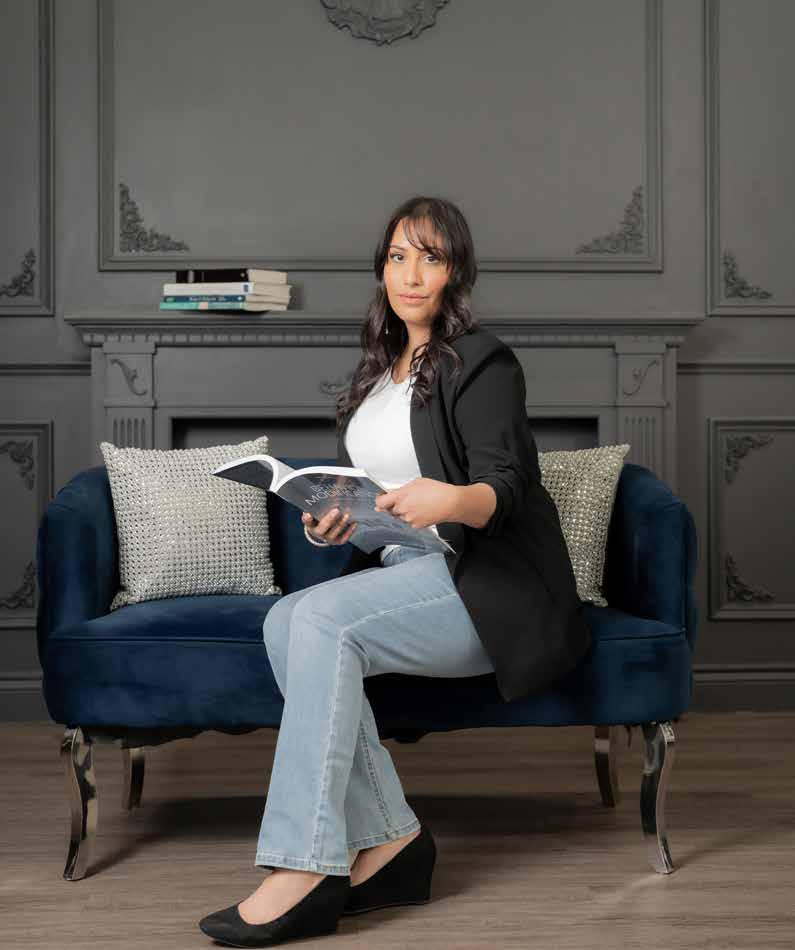
8
discussing culturally specific issues, such as intergenerational conflicts, acculturation stress, and the stigma surrounding mental health. By embracing cultural humility and ongoing self-reflection, I can navigate the complexities of identity, spirituality, and community dynamics with sensitivity and respect. Through this culturally informed lens, my clients are empowered to explore their cultural identities, navigate cultural transitions, and cultivate a sense of belonging and authenticity in their lives.
How do you address stigma surrounding mental health with the South Asian community, and what strategies do you use to promote mental health

While we prioritize regular check-ups for our eyes, teeth, and physical health, mental health assessments are often neglected. However, mental health is intricately linked to brain health; every thought, feeling, and sensation originates in the brain. Mental I find an
eclectic approach is most effective to working with South Asian clients; faith and cultural values should be incorporated into therapy
My future plans include public speaking on topics related to psychological and behavioral health, including the systemic response required to build resilient people, communities and organizations
health is brain health! By reframing mental health as a component of physical health, we dismantle the misconception that psychological struggles are solely personal. Psychology, the science of thoughts and behaviors, illuminates the profound impact of our brain on our daily lives and our daily lives on our brain. Embracing this perspective enables us to collaborate with our brain rather than resist it, paving the way for resilience and a more fulfilling life.
do you prioritize self-care and manage any potential burnout or stress associated with your work as
Balancing three distinct career streams as a psychotherapist, adjunct professor, and brain injury behavior consultant keeps me constantly engaged. It gets pretty busy! I prioritize maintaining a healthy work-life balance by implementing strong boundaries and protecting time for self-care. I try not to let my career be my entire identity. Engaging in activities such as writing, creating art, reading, and spending time with supportive friends allows me to reconnect with my authentic self and gain valuable perspective. Planning an annual vacation to my favorite destination serves as a comforting ritual, providing a well-deserved respite from busy periods. Recognizing that my clients’ journeys are their own, I’ve learned the importance of not overextending myself and setting limits to ensure I don’t bring work-related stress home. This approach allows me to navigate my multifaceted career with resilience and fulfillment. Also, my pets have grounded me in many ways; shoutout to my dog Jango who passed away in August 2022 and my fiercely independent cat, Blade.

My future plans include public speaking on topics related to psychological and behavioral health, including the systemic response required to build resilient people, communities and organizations. I also have had a long-term plan of one day opening my own group home that seeks to provide others with opportunities to connect with the land, others and purpose.


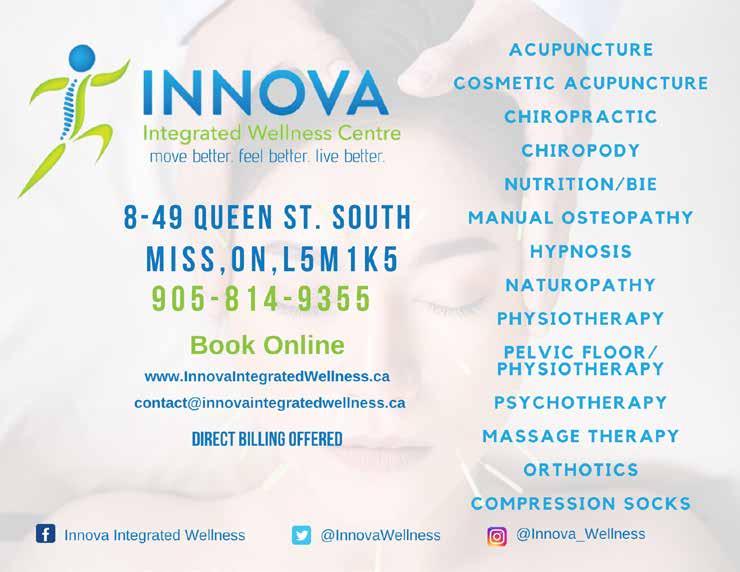

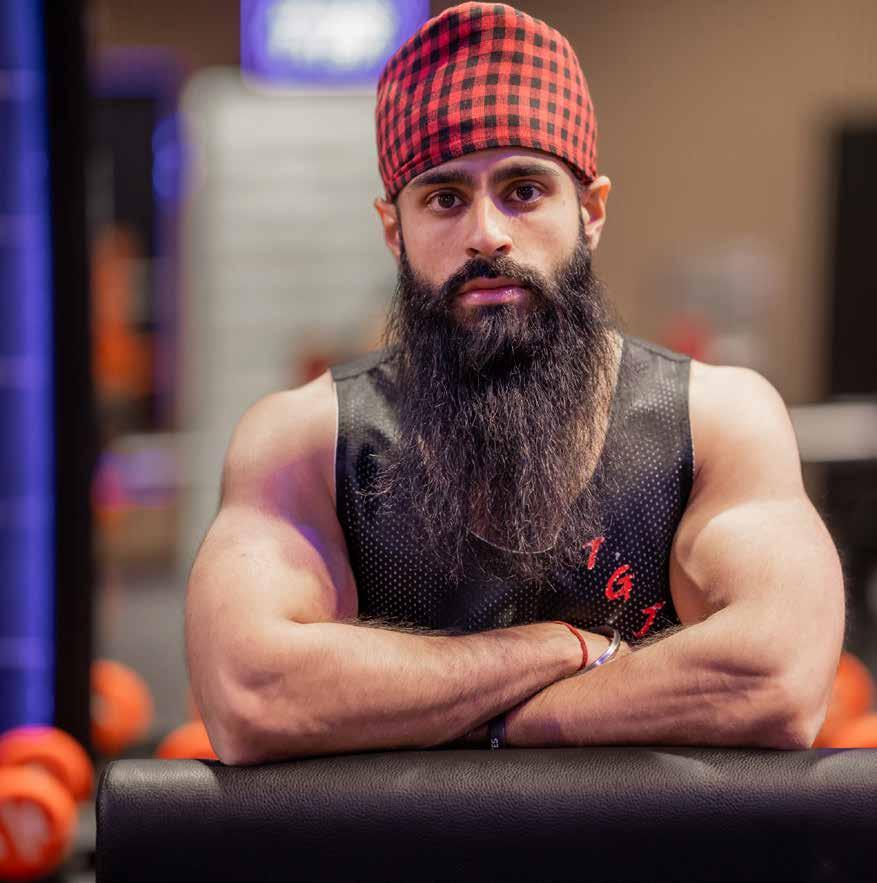

Alongside this my own dad had lost about 40 lbs just by following some of the lifestyle changes I had made. This gave me a boost in confidence and a purpose - which is to help others create a lifestyle that allows them to get jacked and feel better on a daily basis. Which allows them to be in a place to find their own purpose and allows them to have an impact on even more people. All in all, being able to improve myself while helping others has been an inspiration.
There were several moments that inspired me to make changes in my life. The very first time is when I started high school in 2010, I felt insecure about how I looked as I was a fairly chubby kid. I started riding my bike to a recreation center every day and starting working out. I was strictly driven through wanting an external change but then I became obsessed with going to the gym. Fast forward to 2017 when I did my first men’s Physique show and finally got that “look” I wanted. I realized I still wasn’t happy with myself and this is where the real “health” journey began. I started to listening to more podcasts, taking courses and working on the lifestyle, nutrition, mental side of things just as much as the physical. Once I started to make these internal changes as well, I realized how many people needed help with their health and fitness overall so I started to pursue training.
My training philosophy is fairly simple but effective. Master technique, build a habit of showing up to the gym, then train with high intensity consistently over a long period of time. My personal approach is focused on high variation of movements so we get our bodies in different planes allowing us to be strong as a human rather than focusing on the outward appearance but feeling tight and stiff all the time. However, I do stray a bit away from the traditional “fat loss/weight loss” training and focus way more on how to optimize the body to put on MUSCLE MASS. Muscle mass is basically a gold mine for our bodies and backed with so many studies - showing improvement in longevity, mood, energy levels, strength, sleep, bone density, metabolism (you even get to eat more!) etc. This approach does take a bit longer but is way more rewarding in the long run.
This approach depends on the client and where they are currently at in their health/fitness journey. The main thing I focus on initially, is building adherence to consistently show up to the gym and practice correct form. How long this takes will depend on where the client is at. In this phase, the big focus is veggies, fruits, protein intake and getting steps in. Once a client can consistently show up to the gym, eat their veggies and go on walks, then the stage is set to get JACKED. Now we start to focus on body composition changes knowing that we won’t just rebound after losing all the weight as we have built an identity and set of habits that creates a jacked lifestyle. This is when the training will pick up in intensity as well and we will start to track metrics dependent on the client goals.
I started to listening to more podcasts, taking courses and working on the lifestyle, nutrition, mental side of things just as much as the physical. Once I started to make these internal changes as well, I realized how many people needed help with their health and fitness overall so I started to pursue training.
How do you assess a client’s current fitness level and create a customized workout plan?
There are several steps to this, the first one being the initial consultation where I can get a good idea of where the client is at and what areas they need based on the conversation. I mainly focus on listening to the client during the call which gives me a lot of background information to work with. After the client fills out an intake form and sends me specific assessment videos that I ask for - where I look for how their mobility, stability, strength looks like doing several different exercises - this it gives me a good idea of what their limitations may be. This sets the stage for me to create an initial 2–3-week customized program for the client.
I provide daily feedback to my clients along with weekly check-ins help me decide what adjustments need to be made until we get to a point where we start to get jacked within the client’s current lifestyle and schedule. The program will only be as great as the clients’ feedback and adherence to the plan - this is why I am a big believer in teamwork to get the most of the JACKED experience.
I focus on a principle-based approach meaning, first I focus on building solid habits and relationships with foods where the emphasis is on consistent vegetable, fruit, protein in-take and becoming aware of the nutritional breakdown of the food we consume on a daily basis. Especially being Punjabi, there are a lot of foods that are perceived to be high protein such as chickpeas, kidney beans, paneer and almonds but tend to be much higher in carbs/fats. Just becoming aware of this allows clients to make better choices on a daily basis.
Once this foundation is established, we then focus on some sort of method to track calories to ensure we are on a slight surplus of calories so we are primed to put on muscle mass.


Tracking calories tends to be seen in a negative context sometimes because it seems to be a task that required a lot of effort high effort. However, once we begin this process, we realize it actually provides us with way more awareness around the foods we are consuming on a daily basis and allows us to make better decisions when it comes to nutrition. This gives us way more sustainability and flexibility long term instead of constantly restricting ourselves then binging.
I try to stray away from the whole idea of “cheat meals” as I think that puts us in a wrong mindset about how we should perceive food in general. It tells our mind that certain foods are “good” and others are “bad” which definitely may be the case. Instead of restricting myself all week and looking forward to that one day to indulge, I try to focus on a few things:
1. Have a clear visualization of the physique / health I want in my mind which allows to me just make better decisions on a daily basis
2. Integrate some of these foods that we enjoy on a daily basis following an 80/20 rule - meaning that the last 20% of the diet may be something like cereal, cookies, cream cheese on a toast, slice of pizza etc. This way it is integrated into our lifestyle in moderation and we are not constantly restricting ourselves. Also, keep in mind that if someone wants an elite physique this may need to change to 95/5% depending on where the individual is at and what their long-term health/fitness goals are.
When I know certain events, special occasions or vacations are coming up, it’s going to be hard to follow a nutrition plan, so I just take it easy and enjoy myself. I try to still be mindful to get my fruits/veggies and protein in, as I truly just enjoy feeling good. I do not feel good if I over indulge and go off the rails. However, overtime this just becomes second nature as we build solid habits.
I try to stray away from the whole idea of “cheat meals” as I think that puts us in a wrong mindset about how we should perceive food in general. It tells our mind that certain foods are “good” and others are “bad” which definitely may be the case.
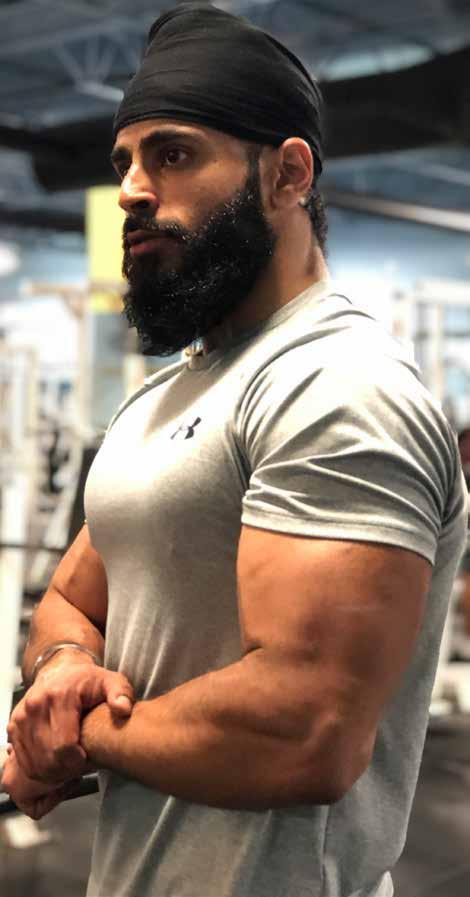

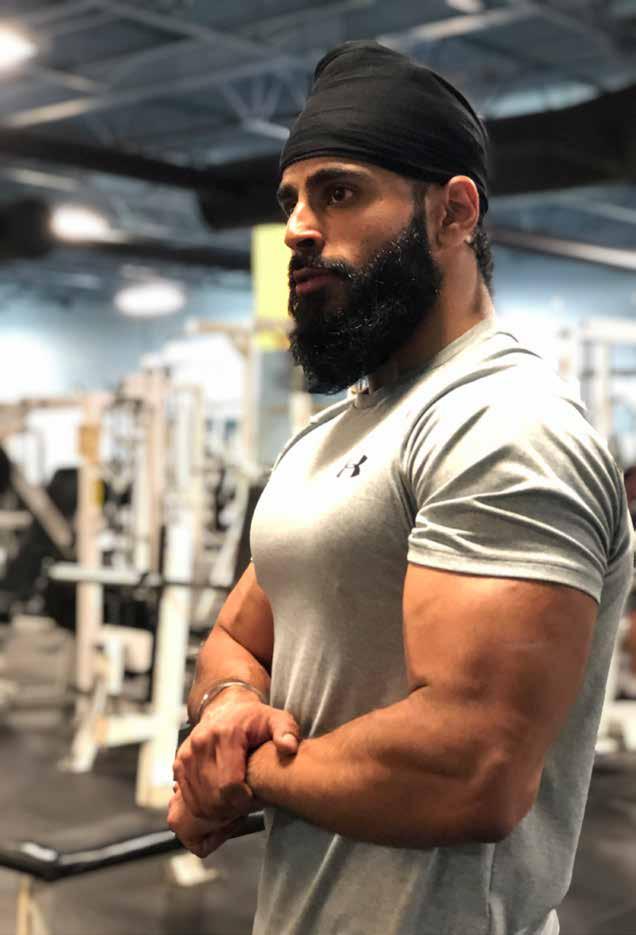
Tell us about your program – both online and in-person. What is the process involved for clients to get started on your programs?
My current focus is my 1 on 1 online coaching. I found being online gives the client the opportunity to learn how to get disciplined by themselves in their day-to-day lives - this is important for long term success. Also, it gives them a bit more flexibility on their workout schedule. If the gym tends to be too far, this obstacle itself kills many journeys before they even begin. Along with many other benefits, I have seen clients start making faster and better lifestyle choices right away as they know they are responsible for their own health and success. One of my main intentions with the online coaching is to yes, provide the client with their dream outcome - but also help them create a lifestyle and structure which they can integrate into their current lifestyle leading to getting JACKED forever.
My current online program includes:
1 ON 1 COACHING - 6 MONTH PACKAGE
Initial in-depth intake and assessment process - going over client’s fitness level and limitations, goals, dream outcome
Custom Training program
Custom Nutritional guidance - making this as integrated as possible with the south asian diet
Lifestyle guidance
Providing the client with Clarity and Structure
App access with a clear way to track progress, workouts, nutrition, pictures - to ensure progress is being made
Video feedback - providing client with feedback on their form based on videos provided
WEEKLY CHECK INS with COACH
Daily availability for any questions / feedback
Bonus: TGJ Community access - 1 weekly Zoom calls - going over form, motivation, getting jacked, whatsapp community

8
Over 20 Programs to choose from - If you are looking for structure this is the move
Meal plans
Calorie calculator
Educational videos going over all form for exercises, nutrition, lifestyle
Community chat with daily discussions around training, nutrition, motivation, lifestyle, form check
2 Weekly zoom calls with the group and TGJ coaches
Clients can sign up here -> https://www.trynagetjacked.com/community
do you see yourself in 5 years?
Business-wise, I’d like to own a few gym locations called Jackedville - where it’s an all-inclusive gym that contains the following:
1. A nutritional cafe - this is where people will get most of their body composition changes
2. Gym - this is where people will get Jacked
3. Recovery zone - nap pods, cold plunge, sauna/ meditation area – Getting good rest is key to this process
4. Mind Reps Library - to get our minds jacked
5. Workspace - for individuals to be in a growth environment where all individuals are trying to improve their own lives and mindset. Great way to network and be productive
6. Content studio - specific area to record content for YouTube, podcasts, short form - to help and influence even more people to choose the get jacked lifestyle.
Coaching other coaches who can take on a wide range of clients, aiming to reach over 1000+ clients by end of 5 years
Have my YouTube channel being the industry go-to where I can reach people with long form content and impact them to change their lifestyles into the jacked lifestyle
The overall purpose is to serve and get as many people as jacked (based on their health/fitness) as possible.



“ I have been working out with Rounit for 2 years. At first, I was hesitant to try personal training because in my experience, coaches tend to be pushy and overwork you till you stop coming. To my pleasant surprise Rounit was far from that. His unique style of coaching where every workout session is personalized to my energy levels, my lifestyle, caloric intake, sleep and so fourth. This played a huge roll in my motivation factor because I knew every workout will be effective and not take me to the point of no return. That, combined with Rounit no yelling, screaming, pushing technique made all my workouts fun, exciting and still challenging. Prior to training with Rounit, I had been working out for 7 years on my own. I can safely say I saw more results in 1 year then I did in those 7 years. My friends, family and fans all notice and I get compliments all the time. Not only do I look great, I feel great. Rounit helped me grasp a firm understanding of vital information which many of us tend to ignore. Like caloric intake, protein, meditation, stretching and planned relaxation time. Weight training is one thing, but when you combine all of those you will see growth in all areas of your life. I highly recommend training with Rounit to my friends, my family and now YOU! I put my name on it so you know I mean it! You will NOT regret it. So as Rounit likes to say, “rip the band aid off and let’s get jacked n shi”

Canadian South Asian women represent a strong, equal, and growing population. South Asian women entrepreneurs and professionals need equal representation and support in business. We need to set an example for our future generation of young women that they can succeed and bridge the gap in all professions. Join us in our mission as we strive to create a center to foster and promote South Asian women professional excellence









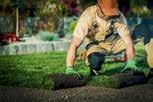































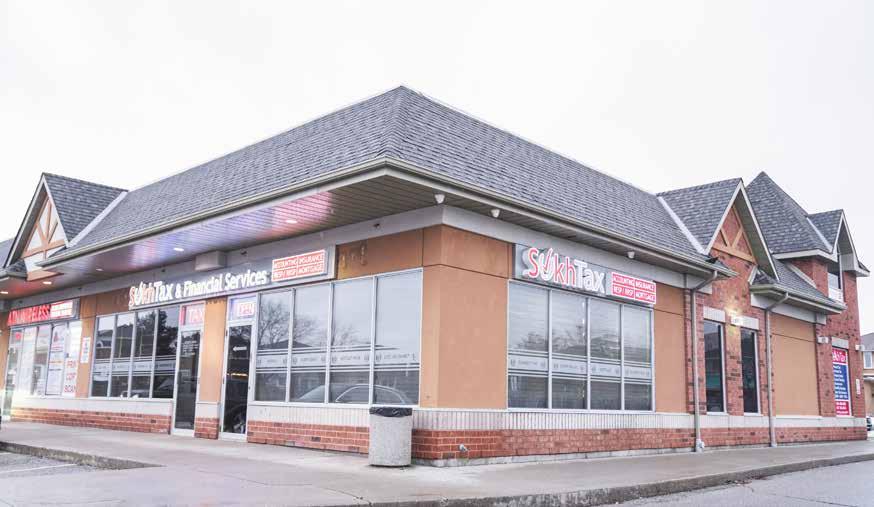
Sukh Tax has been serving individuals and businesses for over a decade. Starting off as a tax preparation and planning firm in Brampton, Sukh Tax has grown to extend its service offerings. Sukh Tax currently has four physical locations in Brampton and Mississauga, and offers services virtually through their website, the Sukh Tax app, and WhatsApp. With an aim to provide the highest value to clients, Sukh Tax strives to be a leader in the tax and accounting industry through continuous investment in improving client experience.
Sukh Tax specializes in personal tax, business tax, accounting, payroll, estate planning, business advisory, and other related services. Over the years, Sukh Tax has increased efforts to support small businesses through extending services relating to bookkeeping, payroll, and business loan assistance. Sukh Tax aims to be a pillar in the financial growth of their clients. For this reason, Sukh Tax places great importance on offering value-add services to meet the needs and goals of their clients.

As a family run business, Sukh Tax’s success is deeply rooted within their connection to the community. Over the years, Sukh Tax has grown its loyal client base and business partners through creating personal connections. The firm strives to maintain its active presence in the community through attending local events, such as the South Asian Real Estate & Health Expo.
